Anemone flowers, also known as windflowers, captivate with their graceful charm and diverse colors. These blooms can bring elegance and vibrancy to any garden or floral arrangement. Here is a list of 15 remarkable anemone species, each with unique characteristics, stunning colors, and growth habits. Let’s dive into the beauty and details of these breathtaking flowers.
Different Types of Anemone Flowers
‘Queen Charlotte’ (Anemone x hybrida ‘Queen Charlotte’)
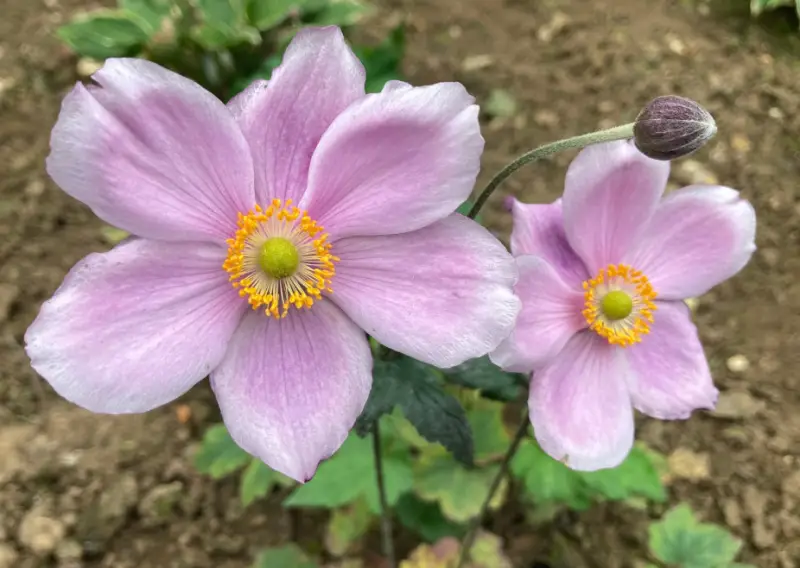
The ‘Queen Charlotte’ anemone showcases large, semi-double flowers in light pink hues with a hint of white, adding elegance to late summer gardens. Originating from hybrid species native to China, this variety is ideal for USDA zones 5–8 and grows to 24–36 inches. Unlike other anemones, ‘Queen Charlotte’ blooms in August, bringing color when other flowers are fading. They spread slowly over time, creating lush, perennial displays that benefit from winter mulching.
‘Honorine Jobert’ (Anemone x hybrida ‘Honorine Jobert’)
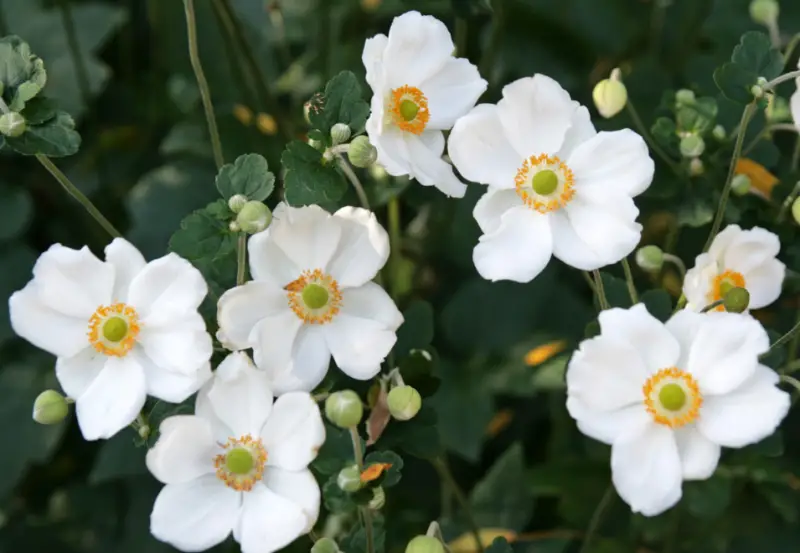
‘Honorine Jobert’ anemones are a hardy choice for colder regions, growing well in USDA zones 4–8. This variety features striking white petals with a subtle pink tinge, making it a popular Japanese anemone cultivar. Blooming in late summer, it fills the garden during the lull of seasonal transitions. It prefers partial shade, with a height of 36–48 inches, and thrives best in cooler zones where hot, humid conditions are absent.
‘Serenade’ (Anemone x hybrida ‘Serenade’)
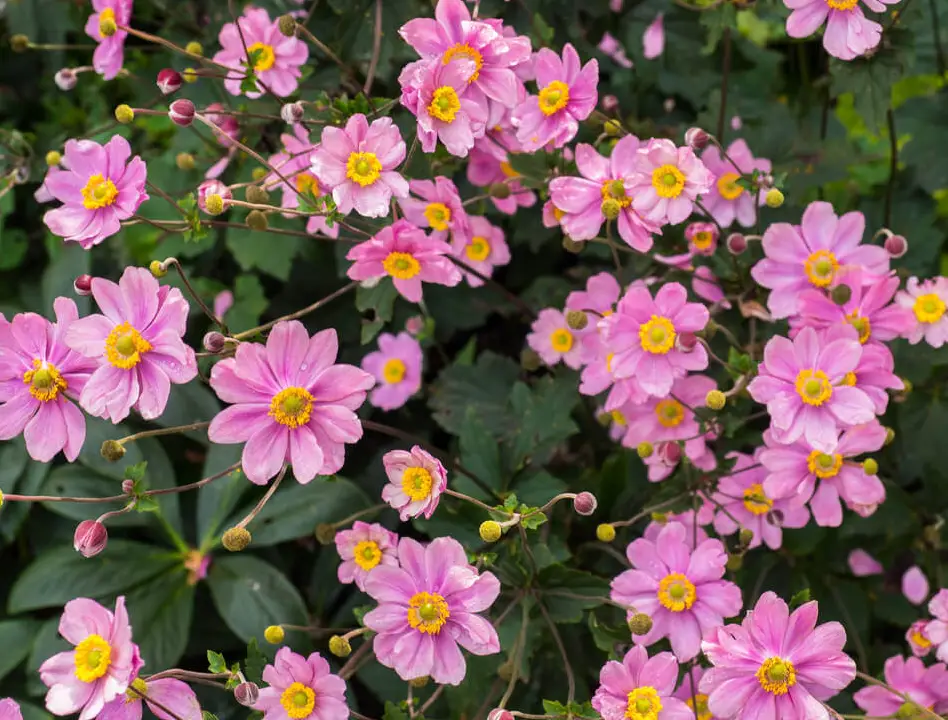
‘Serenade’ anemones bring soft, daisy-like pink flowers on wiry stems, perfect for containers, borders, and cutting gardens. Another Japanese anemone cultivar, ‘Serenade’ blooms from late summer into fall. Thriving in USDA zones 4–8, these flowers reach heights of 36–48 inches and prefer sun to partial shade. They add a graceful touch to autumnal gardens and are easily maintained, making them a favorite for gardeners seeking seasonal charm.
‘Montrose’ (Anemone x hybrida ‘Montrose’)
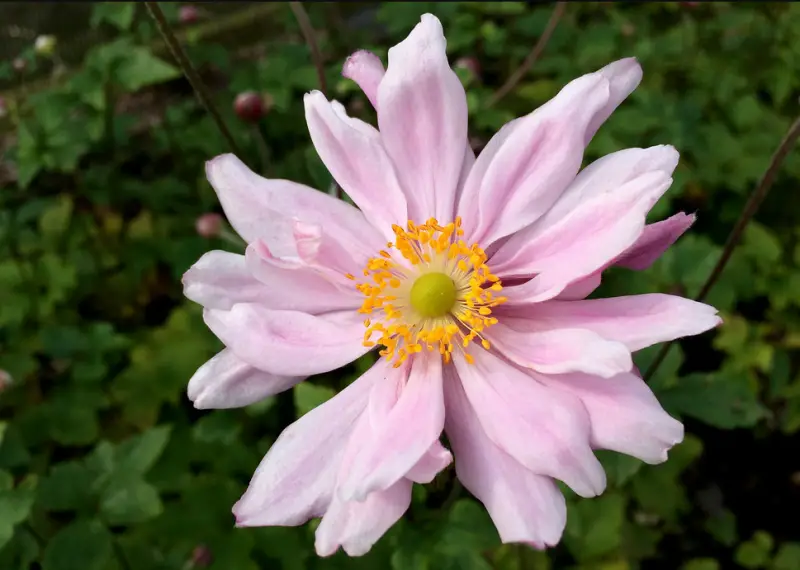
‘Montrose’ anemones are known for their slightly shaggy, double-layered light-purple petals that bloom from late summer to fall. Part of the Japanese anemone family, they offer a soft and natural look, making them ideal for informal garden arrangements. This cultivar is well-suited to USDA zones 4–8 and grows 36–48 inches tall. Deer-resistant and long-blooming, ‘Montrose’ anemones thrive in both full sun and partial shade.
‘Richard Ahrens’ (Anemone x hybrida ‘Richard Ahrens’)
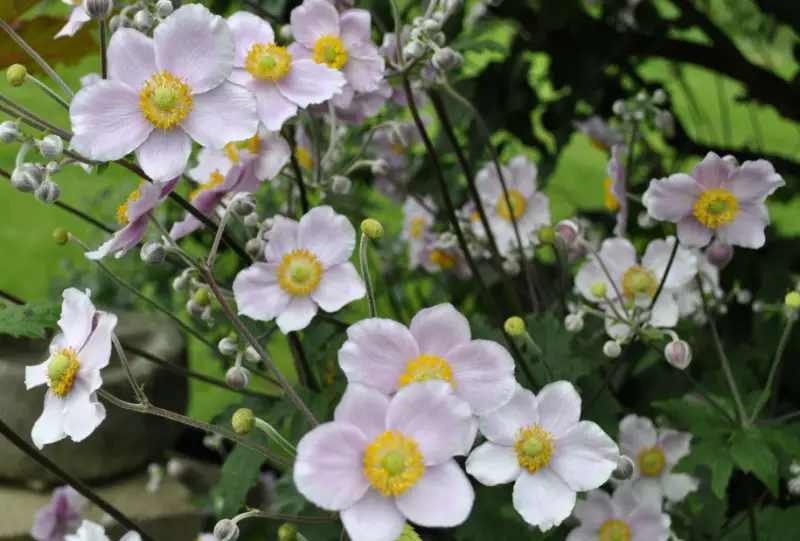
‘Richard Ahrens’ anemones produce pale pink blooms from July to September, bringing a delicate touch to late-summer gardens. Although this Japanese anemone cultivar can spread aggressively, it’s manageable when grown in containers. Suitable for USDA zones 5–7, they reach heights of 19–40 inches and do best in partial shade. The soft color and manageable growth make ‘Richard Ahrens’ a lovely addition to controlled garden spaces.
‘Hadspen Abundance’ (Anemone hupehensis ‘Hadspen Abundance’)
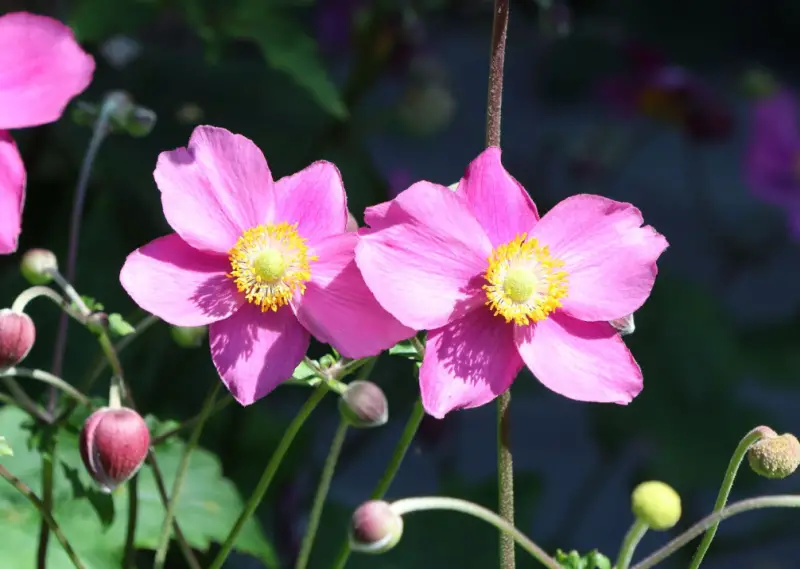
The ‘Hadspen Abundance’ anemone showcases rosy pink flowers with golden centers, welcoming autumn with low-maintenance charm. Ideal for USDA zones 5–8, it blooms from late summer until frost, thriving in cooler temperatures. It grows 24–36 inches tall and naturalizes in semi-shaded gardens without becoming invasive, making it a perfect companion for asters and chrysanthemums.
‘Praecox’ (Anemone hupehensis ‘Praecox’)
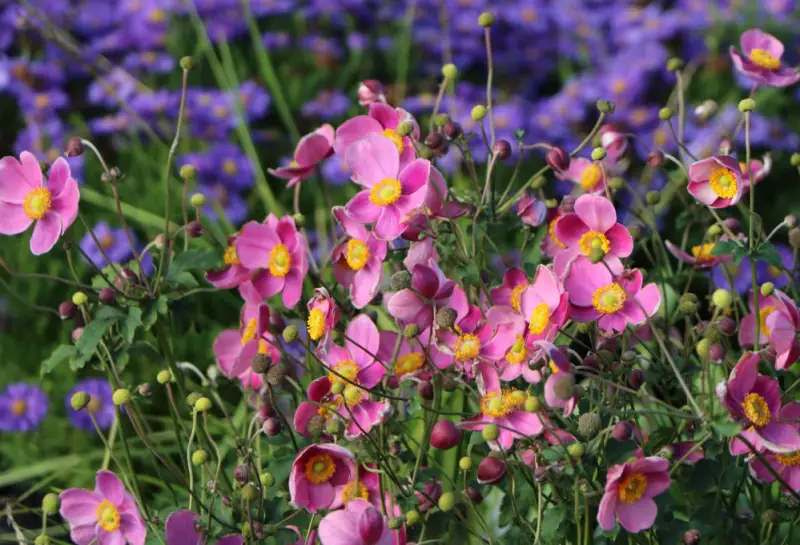
‘Praecox’ anemones stand out with dark pink petals and bright gold stamens, bringing warmth to midsummer and fall gardens. This variety grows well in USDA zones 5–8, reaching a height of 20–40 inches and tolerates various soil conditions, making it an excellent choice for beginner gardeners. With their vibrant blooms, ‘Praecox’ anemones are an eye-catching addition to partial shade areas.
‘Pamina’ (Anemone hupehensis ‘Pamina’)
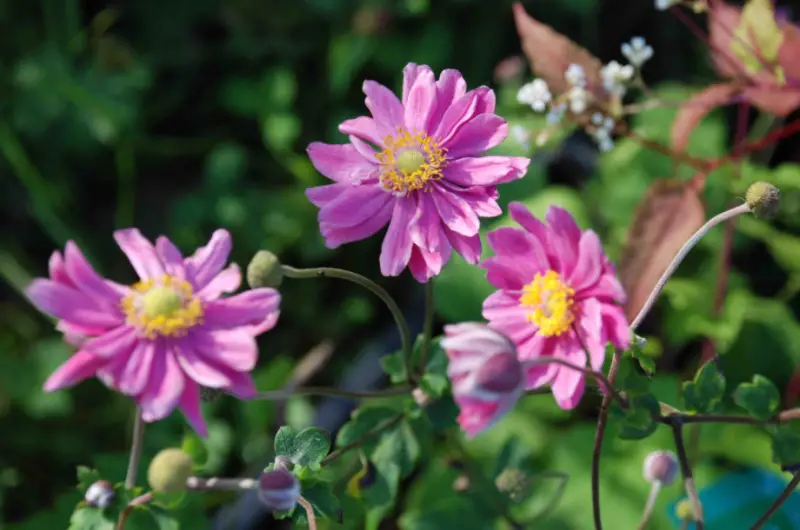
‘Pamina’ anemones, known for their pink, semi-double blooms, bring late-summer charm to the garden. Suitable for USDA zones 5–8, these Japanese anemones grow 24–30 inches tall and spread easily in mild, moist conditions. They thrive in sun to partial shade, adding a touch of elegance and color to semi-shaded borders and beds.
‘Pallida’ (Anemone x lipsiensis ‘Pallida’)
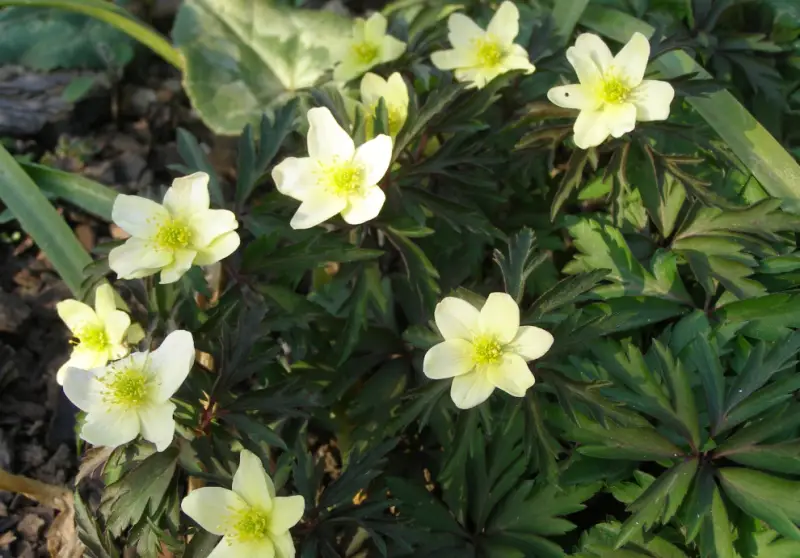
‘Pallida’ anemones, also called wood anemones, produce delicate yellow flowers ideal for cool, moist woodland gardens. These spring bloomers are suited to USDA zones 4–8, with a height of only 4 inches. Derived from hybrid wood anemone species, ‘Pallida’ naturalizes easily, creating soft carpets of yellow blooms that blend beautifully with spring plants like bleeding heart. They’re perfect for gardens that prioritize early-season color and gentle textures.
De Caen Anemones (Anemone coronaria)
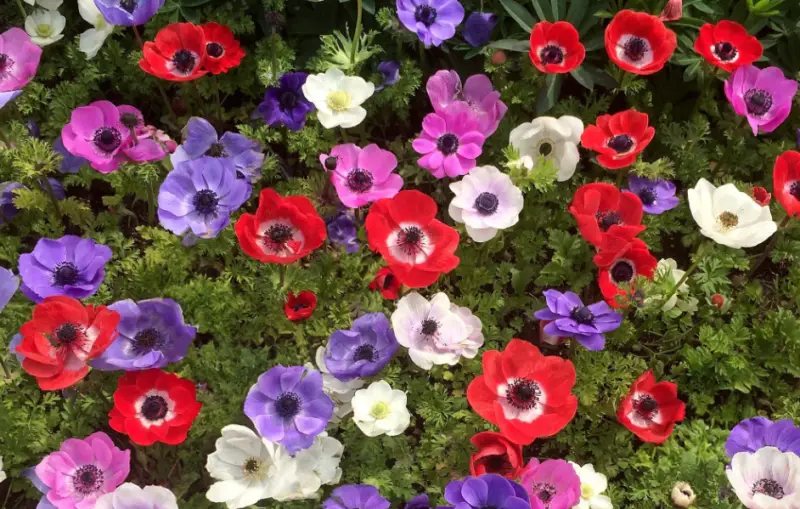
The De Caen anemones are poppy-like flowers renowned for their vibrant colors and wide-ranging cultivars. Often called French anemones, they thrive in full sun, displaying colors from deep reds to blues and whites. Developed in the 1800s in France, De Caen anemones are hardy in zones 7–10 and are grown as annuals in cooler areas. They bloom in late spring when planted in the fall for warmer zones, while cooler areas can enjoy them in summer if planted in spring. With heights of 6–12 inches, they add a vibrant touch to any garden.
‘Mr. Fokker’ (Anemone coronaria de Caen ‘Mr. Fokker’)
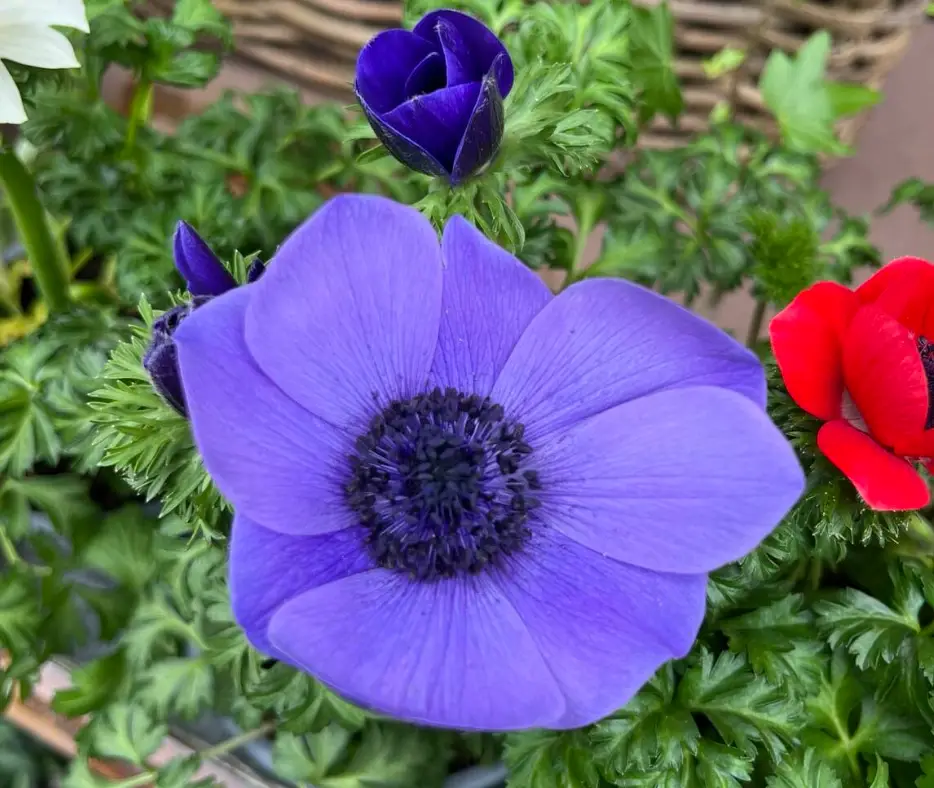
‘Mr. Fokker’ anemones are a standout choice for those who love blue flowers. Part of the De Caen hybrid group, this cultivar boasts rich, azure-blue petals that bloom in mid- to late spring. Originating from the Mediterranean and perfected in France, ‘Mr. Fokker’ is ideal for USDA zones 7–10, with a height of 10–12 inches. These anemones are eye-catching when paired with complementary blooms like mauve snapdragons, creating a striking effect in full-sun gardens.
‘Hollandia’ (Anemone coronaria de Caen ‘Hollandia’)
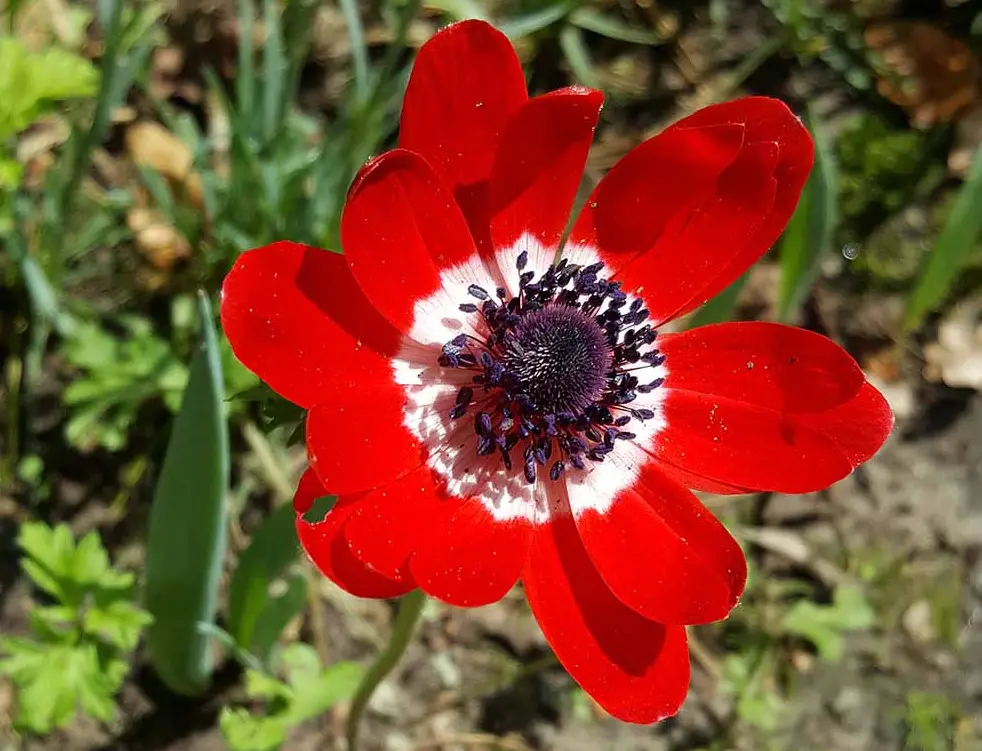
The ‘Hollandia’ anemone’s red petals with a white eye and dark center make it a vibrant addition to spring gardens. Known for its rich cherry color, ‘Hollandia’ thrives in loose, well-drained soil and reaches heights of 10–19 inches. This variety is well-suited to USDA zones 7–10 and is often grown as an annual in cooler regions. Planting them alongside other De Caen types enhances their beauty, making them great for gardens and floral arrangements.
‘Bordeaux’ (Anemone coronaria de Caen ‘Bordeaux’)
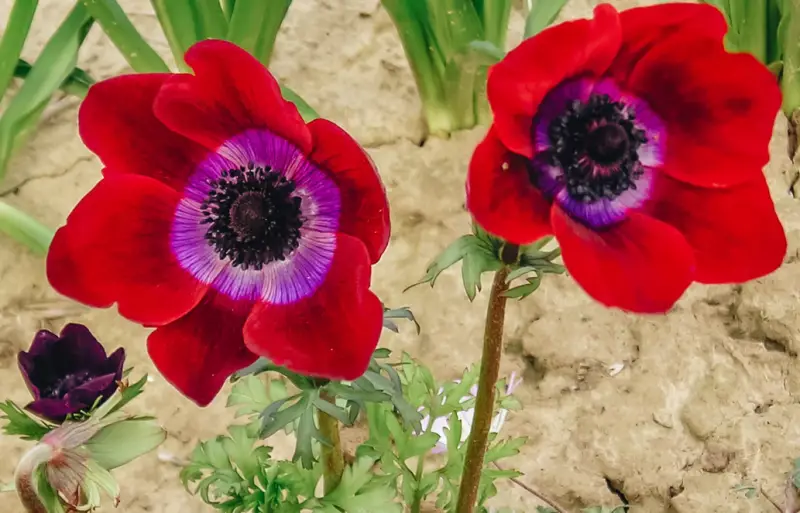
‘Bordeaux’ anemones feature deep burgundy petals, adding a touch of drama among lighter-colored spring blooms. As part of the De Caen group, this variety requires well-draining, sandy soil and blooms in full sun. With a height range of 8–12 inches, ‘Bordeaux’ anemones are ideal for USDA zones 7–12 but can be grown as annuals in cooler climates. These dark-toned flowers are a beautiful contrast to the typical pastels of early spring gardens.
‘The Bride’ (Anemone coronaria de Caen ‘The Bride’)
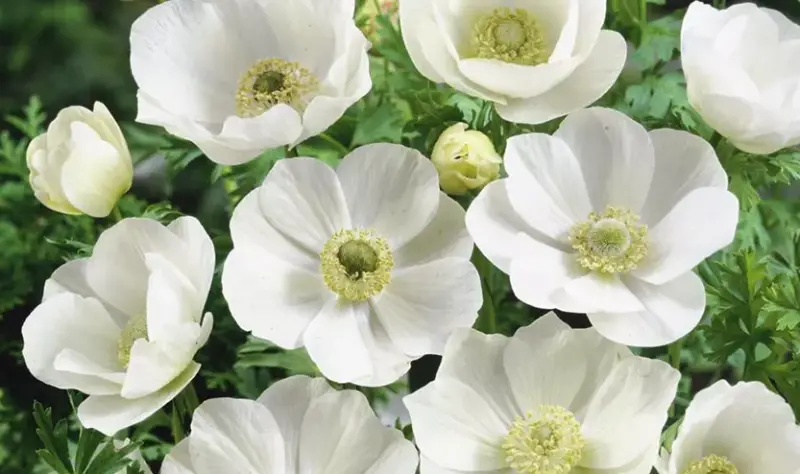
‘The Bride’ anemones feature delicate white petals with pale green centers, perfect for fresh, elegant bouquets. This variety is another spring bloomer from the De Caen group, thriving in USDA zones 7–10 and reaching heights of 4–19 inches. With their crisp, daisy-like appearance, ‘The Bride’ anemones are highly favored for wedding bouquets and arrangements, where their long vase life enhances their appeal.
How to grow and care for anemone flowers
To grow and care for anemone flowers, plant the corms in well-drained soil with full sun exposure. Water them regularly, especially during dry periods. Apply a balanced fertilizer in spring for optimal growth. For detailed care tips, visit this guide.






